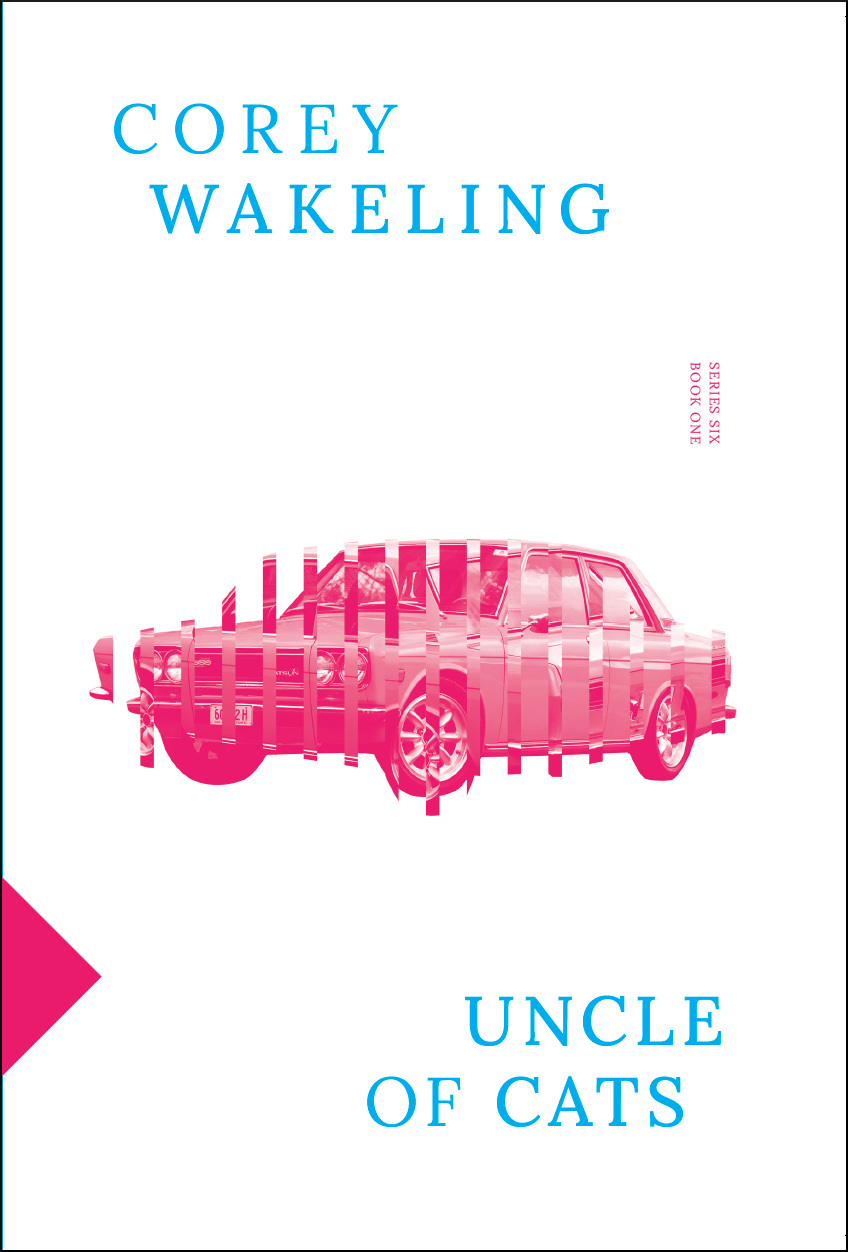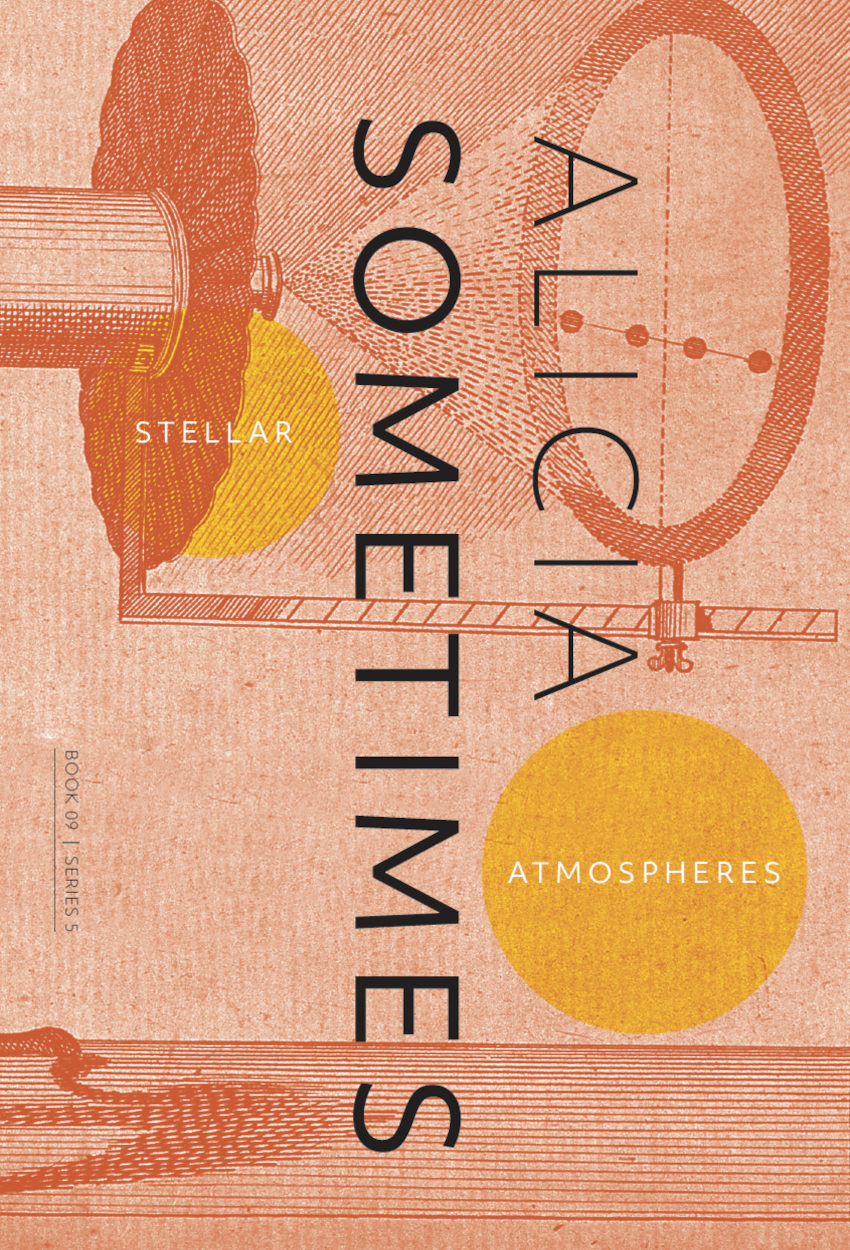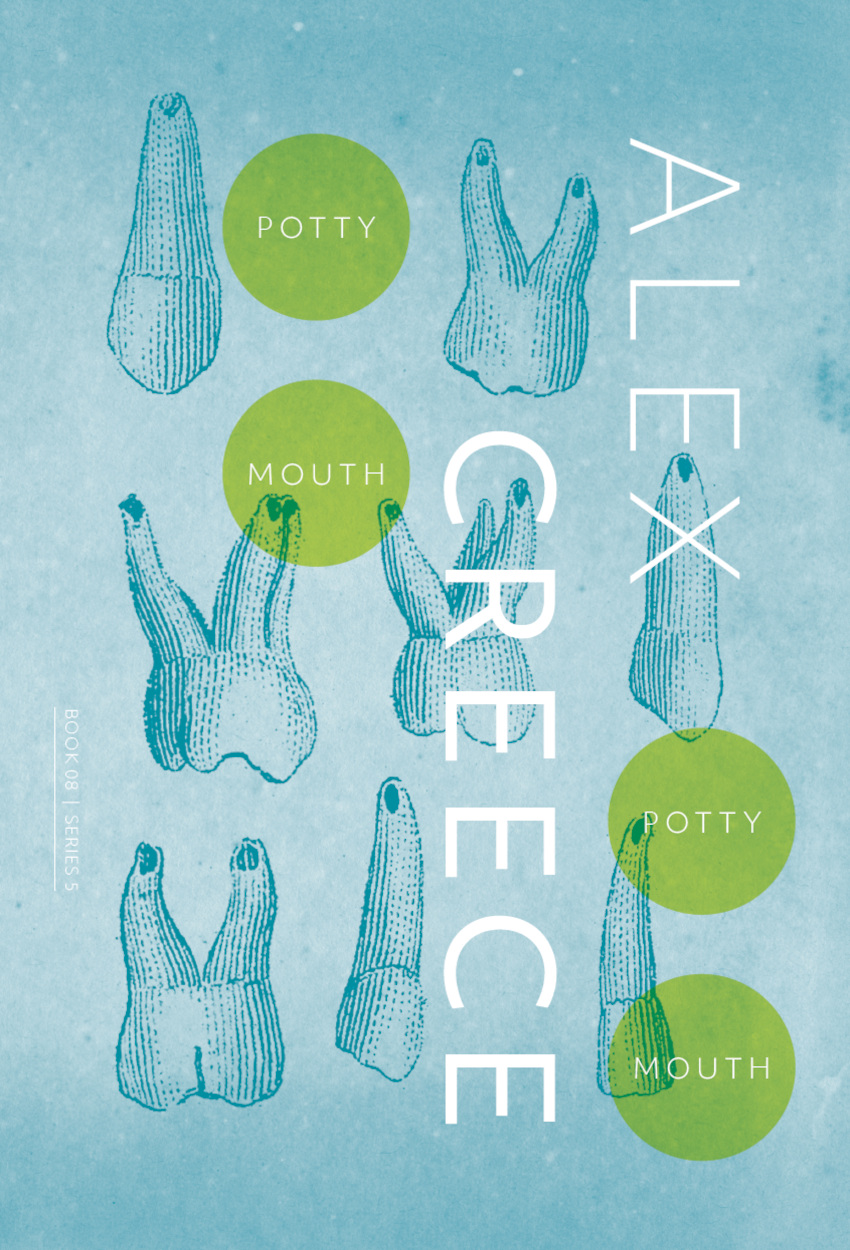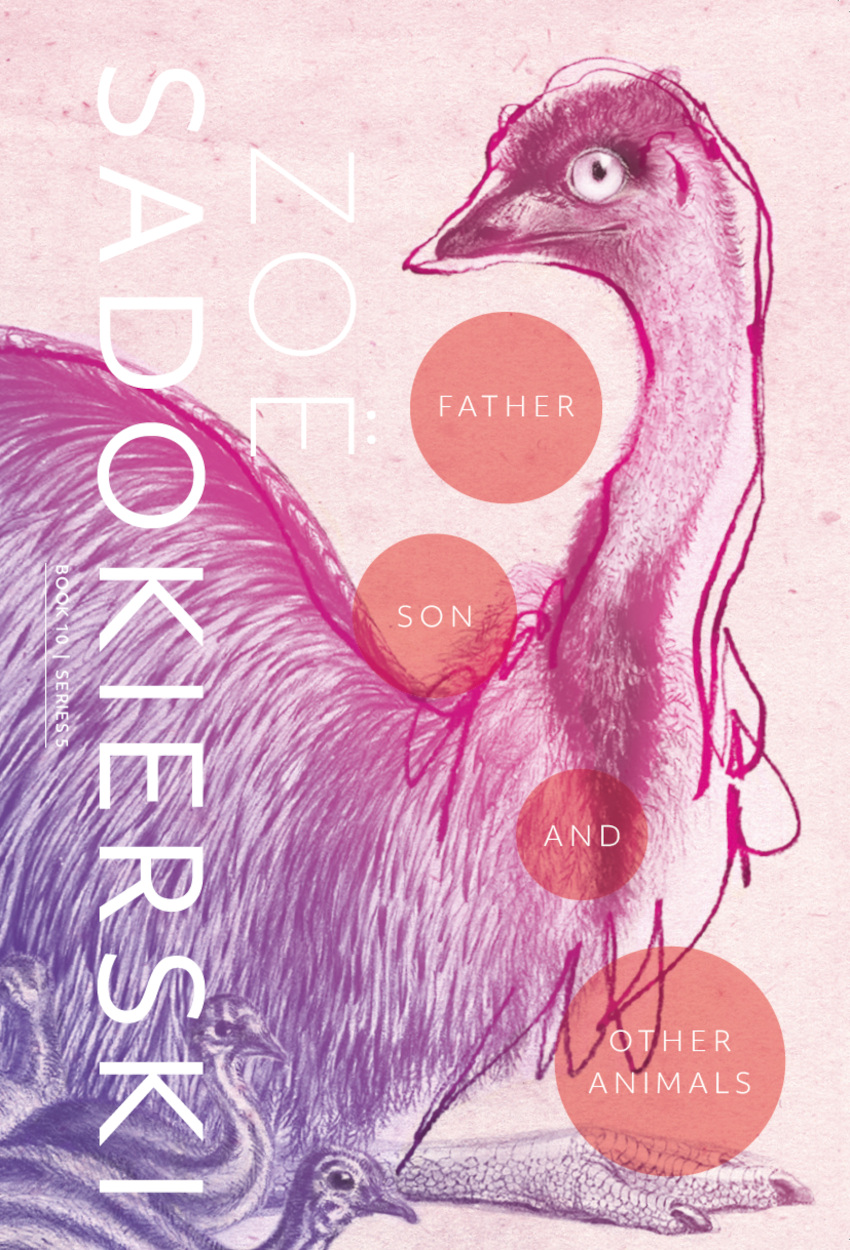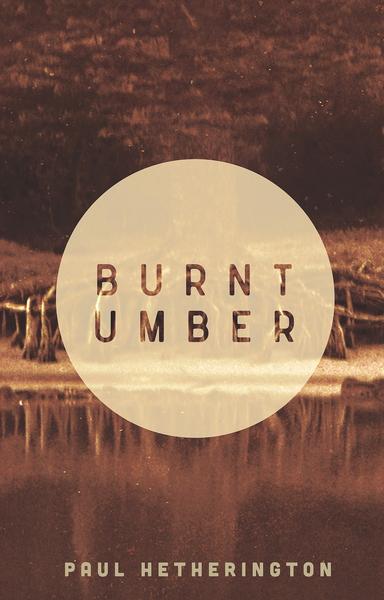
Burnt Umber by Paul Hetherington
UWA Press, 2016
Artistically, burnt umber is an earthy shade intensified by heat. It is a colour synonymous with this country – familiar to anyone who has trekked through Western Australia, from where Paul Hetherington originally hails. In this collection, it is also a metaphor for memory, which, through the heat of feelings in the present, attains an intensity that overwhelms the original events. This is the ‘recollection skewed’ that is confirmed in ‘Painting Four: Doppelgänger’, from the opening sequence of ekphrastic poems titled simply ‘Pictures at an exhibition 1’. Despite its ‘skewed’ nature, the slippery persistence of memory is a theme that haunts these pages. Hetherington does not simply write about memory; he grapples with, dissects, and questions it. The title poem begins with a clock that ‘blanks, and blanks again’. Unlike memory’s allure, time gives no reassurance. It serves to remind us of the unknowable maelstrom of the future towards which it moves, tyrannically. For Hetherington, traditional solace in the presence of art is lacking – instead, there is uneasiness and tension. Paintings have a physical presence that reach out and interfere with time, space and memory. He writes, ‘the painting flattens me’. The dog in the picture has a burnt umber grin that ‘eats its mouth’, the way time eats at us – as Baudelaire rightly obsessed over more than a hundred years ago, and as poets since have regularly confronted.
‘Pictures at an exhibition 1’ consists of impressionistic poems that blur reality and art, past and present. We experience the art in an unsettling manner through the consciousness of the poet. There is a sense of trust between reader and author that is implicit in ekphrastic poetry, usually because we have no immediate access to the images viewed by the poet. In Hetherington’s case, we are not given the names of artists, or any specifics. This trust reinforces the poet’s impressions as paramount; that we must not hanker after facts. Rather than present us with order, Hetherington delivers a stream-of-consciousness approach that verges on the playful. In some lines, he is part of the images; in others, figures from the artwork interact with him in strange ways. Their colours literally seep into his world, or art itself becomes confused with what it depicts, such as in ‘Painting 2: Gunship’, when ‘a splash of black paint explodes in a cornfield’. The abrupt lines convey the clipped mental tone of the poet as he moves around, gathering impressions. A friend or former lover itches at the edge of his mind as he gazes, never quite revealing their identity. He stresses the point that a single motif can recur in memory – in this case, green clothing – in a way that was hardly considered in life. A painted street reminds him of ‘a different year / looking for you- / your green scarf and coat / as if, after all, the place was just paint, as if in departure / you stepped into pigments the painter forgot.’
And so, art becomes another scene to rendezvous with memory. In ‘Painting 6: Eyes’, Hetherington recalls T. S. Eliot and the paranoia of modern life in his query: ‘what walks about me / in dirty boots, holding my ideas / ridiculous?’ The future is a constant, worrying presence so the poem relaxes back into memory’s comfort, as ‘the painting becomes the green / of your scarf / its future tucked / out of sight.’ Is art only relevant insofar as it stirs our past and distracts us from the future? This is a question Hetherington seems to ask. ‘Rooftop: a prose poetry sequence’ highlights the poet’s propensity for stylistic variety. We are treated to seventeen snapshots that operate both as singular junctures and as a story in entirety. It relates an encounter with a woman on a rooftop in Italy who is no replacement for the one who haunts his memory, but with whom he tries to connect and later, to summon by retracing his steps to the rooftop. Through lagoons and canals and endless stairwells, this former lover follows them. Even the water ‘was a hundred discolourations of memory’. In the tenth poem, he speaks of ‘art’s ineffable transport’, but transport to where? Is it into a dream or into the past? Hetherington struggles with his recollections, questioning his feelings for both people, and the details of their moments together, which are not certain. The sequence contains exquisite phrasing, such as in the seventh poem, when he writes: ‘Yet his knowledge of her was meagre as the catch from yesterday’s canal. Old water; two silver and squirming slippages of light.’ This confirms Hetherington as a poet who delights in the potential for thought and language to appear tangible.
It is not just the inner life that motivates the poet. Hetherington explores the trauma of domestic violence that impacts a young boy in ‘House’, a poem that brims with both the beauty of a child’s imagination and the ugly tension that threatens it. In ‘Refugees’, he presents a piercing survey of the suffering of people in detention, forgoing accusations for a tender empathy. He comments on ‘three men with names / that guards can’t pronounce – / close, intimate syllables / with which their parents caressed them’; imploring us to recognise the humanity and love inherent in people deemed aliens by far-right terminology. The poem ends with the image of a young girl dancing, not out of joy but out of madness and a sense of her own oblivion. Finally, someone pushes her over ‘for fear that the rhythm / would graft to their bodies’. Here is a sense of a people forced to live in a circular time with no sense of a future, and Hetherington leaves us to wonder how this could be allowed.
In ‘A museum of the future’ there is a moment of comic relief, as Hetherington examines our modern life from the point of a view of a future tour guide. The survey is both wry and sobering. Yet, the poet indicates a way forward with the last line, as the narrator, after scoffing at the amount of time people spent on screens, refers to groundbreaking inventions of the Romans as a current ‘mini-drama’. It reminds us of how language, and signs, can evolve beyond their original specifications in hopeful ways. The future need not be dystopian, and the science of language may hold some answers. This is another fascination for Hetherington, as it has been for contemporary David Malouf, that is, how communication frees us and yet traps us, bringing us together but also separating us.
In the sensual, hymn-like tribute to a holiday and slight confrontation with death, ‘Savasana’, Hetherington writes: ‘we sense what was valued / when boundaries of creek and hill / valley and stiff-backed ridge / were structures of language’. The present time, with its political catfights and terse monetary values, is troubling. Hetherington states in ‘Lung’: ‘what did he know, except the failure of knowledge to put things right? And speaking’s obduracy’. It is a matter that confronts us in the current climate, the sinking knowledge that perhaps language cannot hold the weight of what is happening. ‘Savasana’ appears to be a postscript to ‘Refugees’. The words we speak do not always dissolve into air. They harden, like rock, and become unyielding and persistent. Communication does not live up to its name. In ‘Roadways’, Hetherington presents us with the mundane image of a couple eating pasta, ‘words sticky in their believing mouths’. The poem suggests that an inherent trust of words can become problematic. Thus, in the second part of the poem, a child stands at a window looking into the Milky Way, ‘beginning to recite parables’, which in this context exudes a hint of delusion. Only by dismantling the terminology of those presently in positions of power, can we reach a future where it may be possible for language to highlight and heal the trauma of current times. However, ‘Heroes’, speaking from the perspective of Greek heroes ordained to die, ends with the foreboding line ‘never think of the future’: Hetherington perhaps commenting that looking too far into the future is not conducive to effecting change in the present.
The failure of language is evident in the World War II sequence, and pervades the mini-narratives of sudden bombs, lost life, trauma, and the sinister nature of memory in shell-shocked lives. The first poem in this sequence, ‘Trench’, demonstrates how the presence of bombs, or ‘thumping exclusions of sense’, induces the thought that ‘language and thought / had lost all bearings’. It ends with a close-up of a person’s face changing colour rapidly in the horrific circumstances, a focus on the fragility of blood and skin. Hetherington inhabits the minds of these characters from wartime with his usual empathy. ‘Meeting’ is an account of romantic betrayal that comes as spontaneously as a bomb, and yet there were many betrayals during WWII. Language itself is a betrayal in such a world. In ‘Court Martial’, which tells of an abrupt killing of prisoners to set an example, one of the men recalls his past idyllic life, where ‘Ambrose insisted that grammar / would put right the world’. In ‘Bombs’, the poet relates the story of his father who was in Darwin when Japanese bombs hit—how he survived and got up ‘saying something they didn’t catch’. It’s not just what we say that can fail us, it is often a lack in the understanding of others that language fails to bridge. Perhaps poetry is a way of reconciling this by shedding light on the problem. ‘Bombs’ is also a vulnerable account of his late father, a war veteran whose presence, like the woman in the green scarf, informs this collection.
There is hope in the section ‘Mythologies’, in which traditionally doomed figures like Lorelei, Prometheus and Icarus manage to survive grief, torture and death to come to realisations they might not have had otherwise. There is space for healing, if we allow it, and Hetherington expresses this via the timeless mythical men and women who seem eternally trapped within their tragic experiences. Prometheus, who knows he is responsible for the invention of firearms and war, reconciles himself with ‘a moment of watery dousing’, a cleansing of self-hate. Icarus recognises he was carried away ‘by an absurd happiness’, and lives to understand it. However, it is ‘Ariadne and the minotaur’ and ‘Minotaur’ that dazzle and astound, and highlight Hetherington’s penchant for conveying startling new hues within ancient tales. The poems mirror each other, but are not equal. The first explores Ariadne’s perspective in a series of compassionate but resolute observations, betraying a love for the Minotaur despite his monstrosity; the other reveals the abrupt, limited thoughts of the monster, whose slivers of humanity are conveyed in unusual double phrases, such as ‘tangle-spittle’, ‘blood prickle’ and ‘laugh-look’. There are postcolonial undertones in this, as both serve to illustrate how language may advantage one subject over the other. However, there are other ways of speaking. Ariadne notes, ‘many nights she went again / to hear him talk ardently / in jabbering language / and with gesture when meanings / jagged in his throat’. In the end, we are presented with a resigned Minotaur who lets her go. The second poem then causes us to empathise with the Minotaur as her handsome rescuer arrives. It reminds one of John Gardner’s novel Grendel, which set a new benchmark for modern empathy with monsters of legend. Hetherington provides a particularly sensitive reading and invites us to question the danger of stereotypes and old prejudices, especially in a world where some continue to harbour them.

